A Frequent Flyer
Mixed media on canvas; 19x19 in.
Sabin is a member of the DRC Resettlement Roster and is currently deployed to Jakarta, Indonesia as a Child Protection Officer.
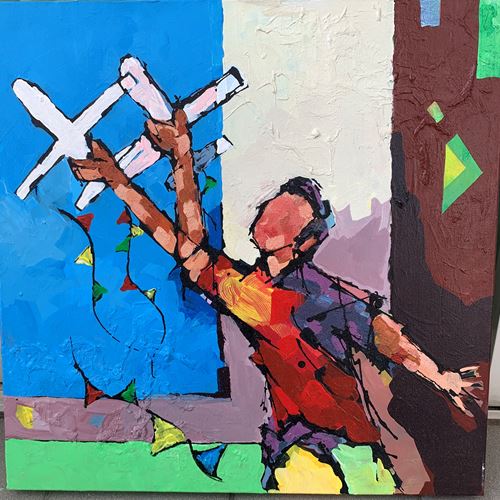
In 2020, I was deployed with DRC in UNHCR Indonesia as a Child Protection Officer. There are around 14,000 refugees in Indonesia from over 50 different countries and almost 1/3rd of the population constitutes children. Refugees from Afghanistan make up more than half of the population, followed by much smaller proportions from Somalia, Myanmar, Sudan, and other countries. The refugees are scattered over 10 different locations across Indonesia, with over half of the population residing in Jakarta.
What will forever stick in my mind is the plight of the stateless Rohingya refugees who were forced to flee Myanmar in search of identity, dignity, and above all, a normal human life.
Around mid-2020, some 300 stateless Rohingyas embarked upon a journey from Myanmar in a boat. They expected to reach Malaysia in about a week where they would meet their long-separated family members, will-be spouses, and work to earn a meagre salary. Then, without warning, things went wrong, and the Rohingyas were not granted access to Malaysian territory. They remained stranded in the sea for several months, forced to withstand the hardships of sultry sunshine, downpours, and survive on scarce food and water within the congested boat. Unfortunately, some of them passed away in the sea, and then, after about 7 months, they finally found solace in Acehnese/Indonesian soil.
My role as a DRC Child Protection Officer became evident as me and my UNHCR colleagues hastily set off on an emergency mission to Aceh, Indonesia. Upon reaching Aceh we found ourselves in the middle of the chaotic site where the Rohingyas were accommodated. While screening, we noted that more than half of the Rohingyas were children and most of them were unaccompanied or separated. While the majority of the unaccompanied boys were the eldest among their siblings, expected to be breadwinners and earn in Malaysia, most of the unaccompanied girls were expected to reunite with their fiancés or husbands in Malaysia.
My role on the site was simple – to ensure the best interests of the unaccompanied, separated, and other vulnerable Rohingya children. I conducted individual interviews with all the children and their family members, and along with my UNHCR colleagues, liaised with several government and non-government stakeholders and individuals to ensure that basic services, such as access to proper accommodation, health, food, water/sanitation, psychological counseling, and contacts with their family members in Myanmar or Malaysia, were restored. Nonetheless, resources were limited as we helped the unaccompanied children identify their temporary caregivers; referred those with serious health problems (some of them with partially paralyzed legs because of having to sit in one place in the congested boat for a prolonged period); and referred those with psychological issues to appropriate counselors. We also developed a comprehensive map of all the service provider stakeholders on the site to identify gaps and omit duplications.
Undoubtedly, while the stateless Rohingyas were safe from the hardships of the sea and from the persecution in Myanmar, upon landing in Indonesia, they have little to no future prospects as they are not allowed to properly work, study or have access to basic services on par with Indonesian citizens. Indonesia has definitely been a safe haven for the stateless Rohingyas, but their future still appears to be bleak.
One learning from this plight of urban stateless Rohingya refugee children is that malpractice knows no boundaries. The other learning, however, is that against all odds, hope nurtures resilience and keeps an individual thriving, regardless of the boundaries.
Sabin, the author of the October 2021 Story from the Field, is also an artist who has created a series of semi-abstract paintings depicting refugee children. Four of his paintings are shown below. Please contact the Stand-by Roster ([email protected]) for more information about the artwork or to view the whole collection.
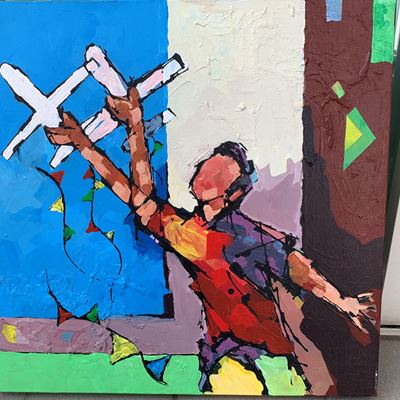
Mixed media on canvas; 19x19 in.
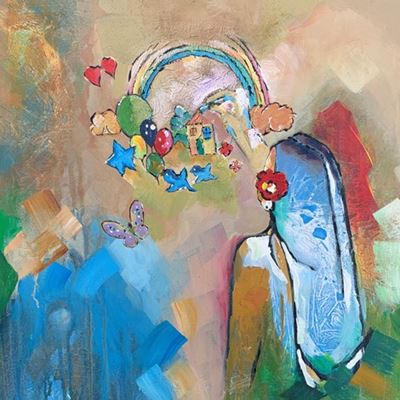
Mixed media on canvas; 19x19 in
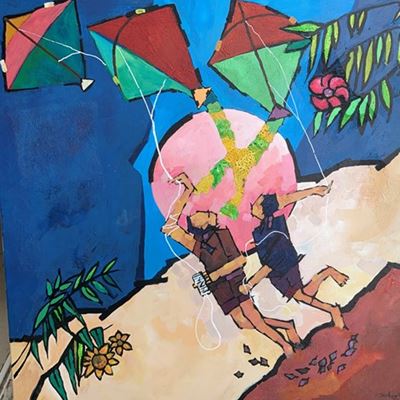
Mixed media on canvas; 37.5x37.5 in.
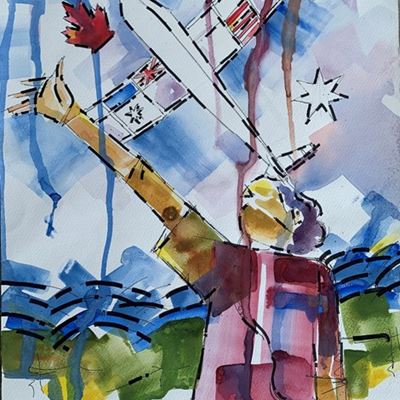
Medium ink watercolor on paper; 16x11.5 in.